You think you’re freshening up your garden for the season ahead but if you’re like most people you actually end up drowning your poor plants in a bark ocean. Don’t worry it’s not your fault! The mountains of mulch you are trying to spread around your bedding is probably exactly the amount that was loaded up on the truck but might not be the amount you actually need. But if you think about what your goal is for the mulch – to create a barrier to choke out weeds and insulate soil – and you think about the mulch transporter’s goal – to empty a boatload of mulch – it doesn’t take much time to figure out where the extra 13 cubic yards came from (and no it should not be formed into a mulch volcano over around your tree trunks).
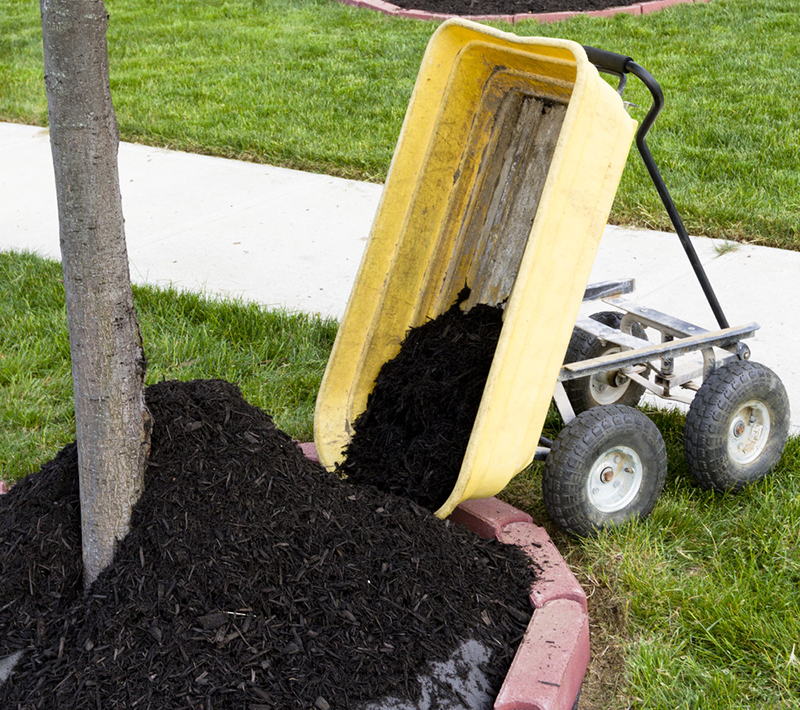
The dreaded mulch volcano
Mulch should be spread about 2” thick and only where it is needed (i.e. where there are no plants). A lot of the time you can rake in less new mulch with existing old mulch and still get a nice fresh look without over mulching. Mixing leaf compost in with your mulch will help build soil structure, increase micro organism activities and add nutrients all working towards creating more robust plants.
We understand that winter is long and waiting for spring can be tough! Like we REALLY understand. The Purple Polos were born to be outside and in the gardens! But just because we can’t wait for spring, doesn’t mean we don’t wait. Spring only comes once a year so we need to remember to not rush through it. Your garden should not be summer ready by March 21. Step back and enjoy the show. Stop rushing around from chore to chore and falling for the spring sale gimmick – national advertisements are not tailored to the great plains of Nebraska. Just because mulch and fertilizer are on sale, doesn’t necessarily mean it is time to mulch and fertilize. Pay more attention to what is going on outside your front door and not what’s flashed across the Sunday ads. Don’t frown at small plants or green tips of bulbs poking through the soil; instead enjoy the simple pleasure of watching things grow. Life has a sometimes slow process and spring is your time to sit back and enjoy the view.
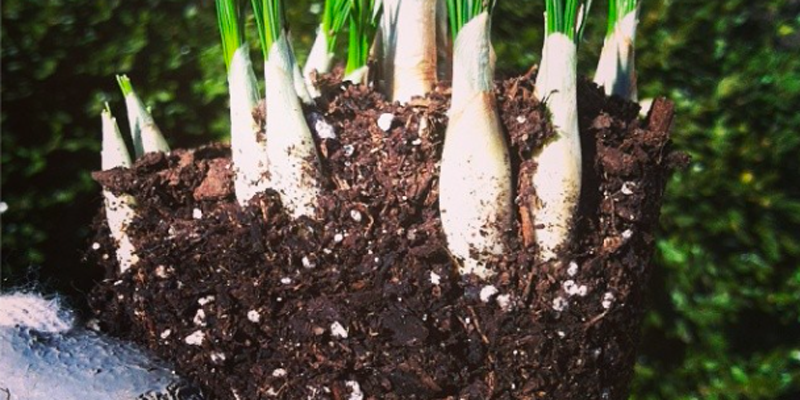
Along with all the fresh new plants growing in your garden this spring, there may also be a fresh crop of weeds! The dandelion slayer in you may want to run and grab the weed and feed and get spraying, but you must remember the plants you are trying to protect. Your wee little garden is full of tender new sprouts and renegade fumes from your sprayer can be harmful to their growth. To cut down on herbicide damage, be sparing with your sprays. In spring, spot treat carefully or if you can, try and use broad leaf weed control in the fall.
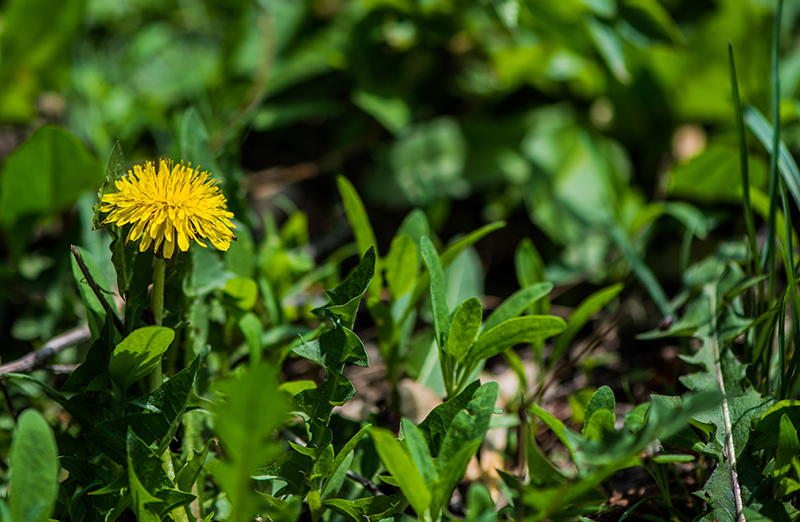
When spring time rolls around everyone is anxious to get back in the garden! They see their plants just emerging from winter’s sleep and want them to regain their spring time glory – stat! Out come the shears, hedgers and pruners to “get things back in order”. But without knowledge of the plants name, function, and natural form, “getting things back in order” turns into a hack-job from hell for your poor plants.
First of all you should never prune or shear a plant that you do not know what it is. Without proper background knowledge you could be seriously damaging the form of the plant or cutting away it’s only source of spring growth. The identification of the plant is crucial for effective pruning. Once you know what the plant is, you can identify the natural form. Simply search the plant name online or in a plant manual and you can get all sorts of information on a plants natural size, form and aesthetic appeal. Now it is important to step back and figure out what the plant’s function is in your garden. Is it a screen? A hedge? A stand along specimen? A foundation planting? Or a ground cover? Once the purpose is determined, you can decide if the natural form is appropriate or if some hedging is required.
One particular plant we see massacred each spring is the Forsythia. Many homes have Forsythia shoved up next to the house as a foundation planting and when spring time rolls around they are sheared into an unnatural sphere or cubed form. But if the home owner knew what they were dealing with, they would know Forsythia are Victorian shrubs. They are meant to grow 8’-11’ high and 10’-12’ wide and work best as yard shrubs! Not exactly a foundation planting if you ask me. When they are sheared and shaped, Forsythia loose their pretty yellow flowers that grow on the ends of their branches and end up a thin, scraggly mess. Give your plants a chance this year, put down the pruners and pick up Michael A. Dirr’s Manual of Woody Landscape Plants.
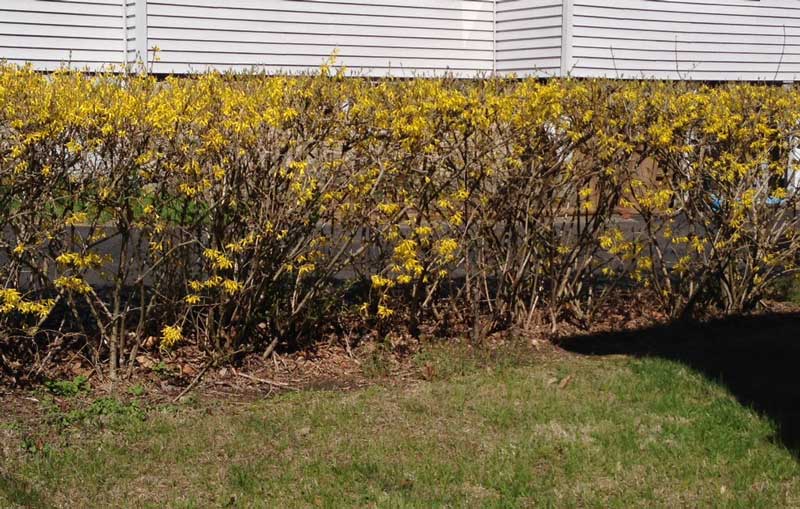
Unnatural Forsythia
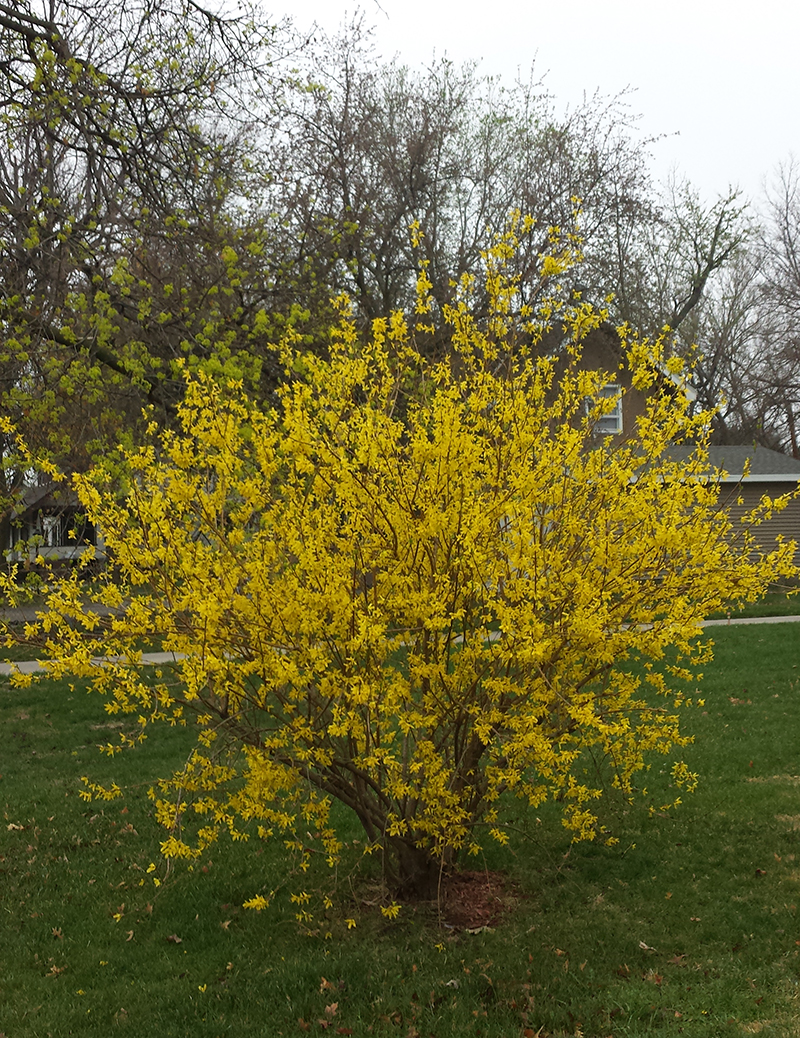
Natural Forsythia
So now spring is here and you know what to avoid; don’t over mulch, don’t rush, don’t damage your new growth with herbicide and put down the shears! Sit back and enjoy watching spring unfold, the season of new is waiting to be admired.
Exciting! New plants in the garden! But wait....now what? How much water? When? Quick considerations before watering: Sun & Shade - Although most may say that shade gardens need less...
Spring fills us with wonder. Not in the ‘feeling of surprise mingled with admiration, caused by something beautiful’ kind of way. More along the lines of ‘what can I plant in my empty...